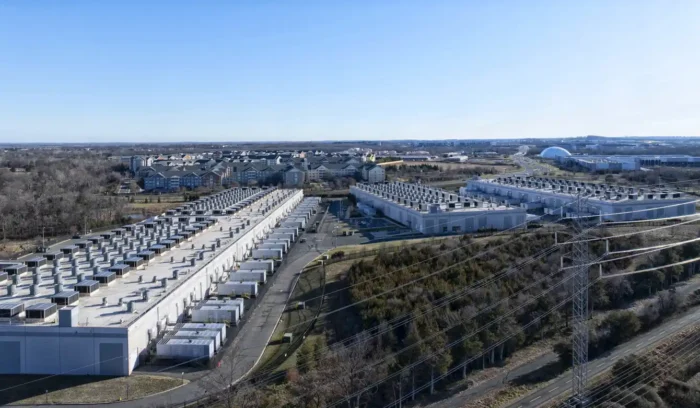Data Centres: Australia’s Next Commercial Property Asset Class
Published
September 24, 2025
Published
September 24, 2025

AI and digital data might seem intangible; lines of code stored in the cloud. But in reality, they’re anything but. Behind the scenes, they are backed by infrastructure: data centres. And as the AI floodgates open wider each week, the need for large scale assets to house the data and power the technology is skyrocketing. Which means data centres are beginning to attract attention as a credible, long-term asset class.
Recent forecasts suggest that national data-centre capacity will more than double by 2030, fuelled by surging demand for artificial intelligence and cloud computing. Close to $26 billion in new investment is expected to flow into the sector over the next five years, reshaping industrial values, power infrastructure and even the suburbs that sit on the edge of these sites.
For investors used to thinking in terms of office, retail and industrial, this represents an emerging frontier. The question is whether data centres, once seen as a niche, will graduate into a mainstream commercial asset class.
What Is Driving Demand
The underlying driver is simple: AI models and cloud services chew through extraordinary volumes of data, and all that information has to live somewhere. Australia’s growing population, a strong base of multinational tech firms and relatively stable power supply make it an attractive market for tech providers.
Big players are not just expanding existing complexes but actively hunting new land parcels near power substations. This has triggered a ripple effect, in that industrial assets once used exclusively for warehousing are now in the sights of tech infrastructure developers. If relevant local councils are smart, they’ll begin to engage in rezoning discussions. State governments are already rolling out incentives to attract global capital.
In short, the demand for compute power is no longer an abstract concept—it has turned into a land and infrastructure race.
Data Centres in Australia?
To be clear, this is far from a US or European trend, with plenty of sites seeing data centre construction throughout Australia as we speak.
So far, Sydney, Melbourne and South East Queensland are the best examples. Western Sydney has become a hotspot thanks to its access to high-voltage transmission lines and existing industrial base. Melbourne’s northern corridor, with land parcels suited to large footprints, is also seeing momentum as developers race to secure space for large-scale facilities.
Each of these regions demonstrates the same pattern: data centres follow power, and values rise quickly in surrounding land and strata assets once a major facility breaks ground. (Yes, that’s a hint for investors: follow the power.)
How Investors Can Position Themselves

Everyday investors do not need to own a billion-dollar facility to gain exposure. Instead, look for areas where infrastructure upgrades—such as new substations, fibre connections or road access—signal that a large data-centre project is either approved or highly likely.
Owning industrial strata in these zones can be incredibly advantageous. As demand for small warehouses and light industrial space rises around a major “hyperscale” site, rents and capital values often increase.
For those with less appetite for property acquisition, unlisted property funds increasingly hold stakes in data-centre operators, offering indirect exposure with lower capital outlay.
Due Diligence Crucial for Data Centre Investment
Risks do exist, of course, so — as always in commercial real estate investment — it’s imperative investors perform thorough due diligence on their potential investment.
The most pressing risk is grid capacity. Even in states with a solid power supply, connection bottlenecks might delay projects for years. We know construction costs are rising construction costs, and this along with supply-chain issues can mean guesswork in investing — after all, it’s not yet a mainstream asset class.
Obviously, environmental approvals are another hurdle. Local communities are increasingly on the front foot to protect water use, energy consumption and sustainability credentials. So, don’t assume a proposal will get the green light, no matter how much the developer is sure it will.
In all cases, thorough due diligence is essential. Following the infrastructure, not just the headlines, is the safer path.
Could Data Centres Become a Major Asset Class?
Anything could happen. AI has an unpredictable influence on our culture and society, as does the impact of data centres on the property landscape. But the scale of planned investment hints that data centres may soon find commonplace in commercial property portfolios. Their growth is tied not to a single trend but to a structural shift in how society stores and processes information.
If capacity doubles by 2030 as forecast, the impact on land values, infrastructure development and investor appetite will be significant. Everyday investors may find opportunities in the industrial estates that host or neighbour these facilities, while sophisticated investors can look to joint ventures, syndicates or infrastructure funds.
Want an extra pair of eyes on property market trends? Join over 1,000 Australian property investors and subscribe to our newsletter. Every month we’ll deliver our expert insights straight to your inbox.
We never spam and you can unsubscribe anytime. Subscribe today.






